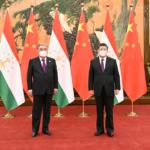India could potentially become a source of skilled labor for the entire world, but it first needs to address several challenges regarding the growing population, according to local and international experts.
In April this year, the UN said India’s population is expected to “reach 1,425,775,850 people, matching and then surpassing the population of mainland China.”
The agency said India’s population is “virtually certain to continue to grow for several decades,” and by contrast, China’s population “reached its peak size recently and experienced a decline during 2022.”
Bela Hovy, head of the UN’s Population Trends and Analysis Branch, told Anadolu it announced in April that India’s population size had surpassed China.
That was based on the 2022 revision of the estimates and projections of world population, he said.
“The population estimates and projections for all countries in the world are revised every two years. The next revision is expected to be launched in July 2024,” he added.
In July, though, the Indian Home Ministry told the country’s Parliament that its population was still at 1.39 billion, less than China’s 1.42 billion.
While the government still disputes the UN population figures and whether it has overtaken China as the world’s most populous nation, experts in India stress that the issue should be viewed from a “people-centered perspective” and not considered a “liability or a weakness.”
The concern should be whether the population, irrespective of the number, “is skilled, productive, healthy and well taken care of,” Poonam Muttreja, executive director of New Delhi-based Population Foundation of India, told Anadolu.
According to Muttreja, there are several challenges before India in terms of population welfare.
“The biggest challenge would be job creation to meet the supply of young people entering the job market, so that we can realize our gender dividend,” she said.
Another major problem is a large number of people living in poverty, she added.
“But, at this moment, it’s not necessarily exacerbated by the speed of population growth. The country is already experiencing a slowing down in population growth rate and a decline in total fertility rate (TFR). India has managed to bring down its TFR to 2.0, which is below the replacement level of 2.1,” she explained.
Lessons from China?
China has shown that a large population can be an asset instead of a liability, said Shahabuddin Yaqoob Quraishi, a former Indian bureaucrat and author.
“With its large population, China had the biggest human resource and that led to great economic development. We have similar lessons to learn from China,” he told Anadolu.
He also dismissed the “misinformed” notion that Muslim population in India is growing at the fastest rate.
He said several “conspiracy theories” have been floated, mainly by right-wing Hindu groups, that Muslims – currently near 172 million – would eventually outnumber the over 966 million Hindus in the country.
In Quraishi’s view, the population growth will stabilize in 10 to 20 years.
“After 2060, it will start coming down. In many states, the TFR is already less than 2. So, instead of increasing, the population there will actually decline,” he explained.
He, however, emphasized the need to promote family planning measures, but with a focus on persuasion as opposed to coercion.
“In family planning, coercion has always been counterproductive. We have achieved great success through educational and awareness activities, and we need to do a little more of that in two or three states in particular,” he said.
‘Precious and rare resource’
Jennifer Sciubba, a leading expert in demographic trends and political demography, said India’s below-replacement fertility rates mean that the country’s population, while still young and growing, “is set on a path towards aging and eventually shrinking.”
“That’s important to recognize because it means that policymakers need to see India’s population as the precious and rare resource it is,” Sciubba, vice-chair of US non-profit Population Reference Bureau’s board of trustees, told Anadolu.
“As large as India’s population is, over the next few decades it will provide a significant proportion of the world’s labor force, or at least it can.”
She said India needs to invest more in education for both boys and girls.
“Female literacy rates and secondary school enrolment rates are not as high as they should be to give India a solid human capital base,” she said.
She stressed that investing in health is equally important, as “poor nutrition and stunting are still significant issues for Indian children, leading to problems that will follow them for the rest of their lives.”
“China did invest in its population in terms of education and health and built a solid human capital base to fuel the economy,” said Sciubba.
However, she pointed out that China “relied on employing a large swath of its population through manufacturing, which is not a model India has been pursuing.”
“India could chart its own course, as it has started to do with higher skilled work in the technology sectors,” she said.
With India currently possessing its largest-ever adolescent and youth population, experts say that particular demographic can play a significant role in its future.
“At the moment, India has a significant demographic advantage, with young people comprising about a third of the total population,” said Muttreja from the Population Foundation of India.
“This youthful population offers a unique opportunity for India to leverage its human capital for economic development,” she said, reiterating that India could leverage it to “potentially become a source of skilled labor for the entire world.”
However, she also emphasized the need for “effective policies and investments in education, skill development, healthcare, and job creation.”
“India has made progress in various sectors, but challenges remain in fully harnessing the demographic dividend,” she said.
“India needs to focus on and prioritize skill development, promote innovation and entrepreneurship, enhance labor market flexibility, and create an enabling environment for job creation across sectors.”
Source : aa
















